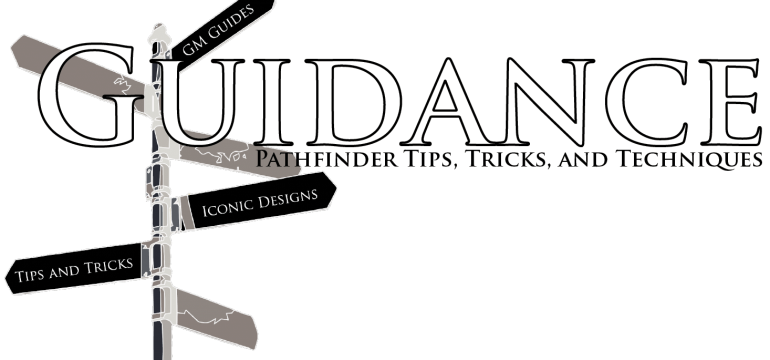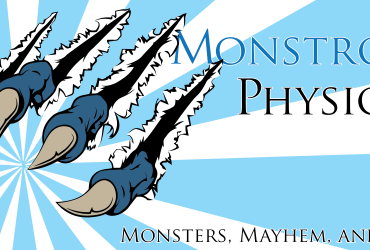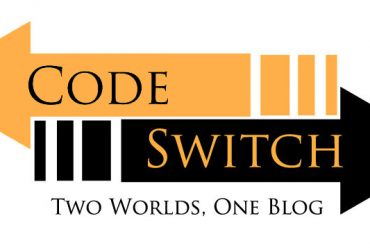Hello, and welcome back to Guidance! Last week we talked a bit about design as a product of need, and so today we’re going to take the problem we’ve identified (armored solarians aren’t good enough at defense) and our chosen solution (solarian armor crystals) and use them to continue our design work. With this in mind, let’s progress to Step 3!
Step 3: Identify Integral Components
So we have our desired solution, now we need to identify precisely what our solution needs to accomplish. You should always start by taking a minute to list out any important information we have on the topic. My list appears below:
- We’ve got roughly a 1 point to EAC / 2 point to KAC gap to work with. (In other words, it can’t break the game’s existing math.)
- Our item needs to be a competitive choice compared to other armor upgrades.
- Our item needs to provide effects that fit the flavor of the solarian class.
- Our item needs to be something that isn’t going to inadvertently boost the soldier further.
Okay! So now our next step is to figure out solutions to each of these paradigms, preferably starting from “most specific” to “least specific.” For example, “Can’t boost the soldier,” is more specific than “be a competitive choice compared to other armor upgrades” because it is easier to set strong boundaries with a specific paradigm then a less specific paradigm. With this information, the next step is to design a solution to each of these problems. Rather than list every possible solution, I’m going to walk you through my thinking for each step.
Cannot Boost the Soldier Further
This requirement is both REALLY specific and easy to do. Immediately, I figured that the easiest option would be to note that the armor crystal only provided you with a benefit while your solar armor was manifested. Now, for wording the rule. First I referenced the Starfinder Core Rulebook’s working for solarian weapon crystals on page 170, which looks like this:
A Solarian weapon crystal adds damage to a Solarian’s Solar weapon. The Solarian can place the crystal inside his mote as a standard action. While within a mote, a crystal applies its effects any time that mote is in a Solar weapon form. A crystal within a mote can’t be interacted with in any way other than via abilities that specifically target a mote. The Solarian can remove the crystal from his mote as a standard action, and the crystal falls loose if the mote is deactivated in any way. A Solarian can’t have more than one crystal in his mote at a given time.
Of specific note are the first two sentences. These quantify where the crystal goes to do its thing. Soldiers absolutely don’t have a mote, so it’s the perfect thing to reference! My first rule looks like this:
A solarian armor crystal adds defensive properties to a solarion’s solar armor. The solarian can place the crystal inside their mode as a standard action. While within a mote, a crystal applies its effects any time that mote is in a solar armor form.
Roughly 1 Point to EAC / 2 Points to KAC
This statement is also relatively easy to work with. The best thing to do would likely to have a flat AC boost associated with a solarian armor crystal, and keeping in line with the first idea (cannot boost the soldier further), our best bet is to use a bonus type that the soldier already possesses. In this case, armored advantage gives a +1 bonus to the soldier’s KAC, so we can make sure the two don’t stack by also providing an insight bonus. Using the solarian weapon crystal writeup as a guide again, we have the first sentence:
A solarian weapon crystal adds damage to a solarian’s solar weapon.
So taking this and the previous paradigm, we get this:
A solarian armor crystal adds defensive properties to a solarian’s solar armor. The solarian can place the crystal inside their mode as a standard action. While within a mote, a crystal applies its effects any time that mote is in a solar armor form. A crystal within a mote can’t be interacted with in any way other than via abilities that specifically target a mote. The solarian can remove the crystal from their mote as a standard action, and the crystal falls loose if the mote is deactivated in any way. A solarian can’t have more than one crystal in his mote at a time.
A solarian armor crystal doesn’t give a solarian the option to create a suit of solar armor if they did not choose that option for their solar manifestation. All solarian armor crystals add a +1 insight bonus to the solarian’s KAC while their solar armor is manifested, as well as an additional benefit described by each individual solarian armor crystal.
Provide Effects that Fit the Flavor of the Solarian Class / Be a Competitive Choice Against Other Armor Upgrades
So for this next part, we’ll have to design specific solarion armor crystals. Right now we’re only hammering out the generic rules of the mechanic after all! So before we move on, why don’t we finish that up?
Here’s our reference point, the solarian weapon crystal rules:
A Solarian weapon crystal adds damage to a Solarian’s Solar weapon. The Solarian can place the crystal inside his mote as a standard action. While within a mote, a crystal applies its effects any time that mote is in a Solar weapon form. A crystal within a mote can’t be interacted with in any way other than via abilities that specifically target a mote. The Solarian can remove the crystal from his mote as a standard action, and the crystal falls loose if the mote is deactivated in any way. A Solarian can’t have more than one crystal in his mote at a given time.
A Solarian weapon crystal doesn’t give a Solarian the option to create a Solar weapon if he did not choose that option for his Solar Manifestation. Most weapon crystals increase the amount of damage attacks with the Solar weapon deal. This increased damage is normally the same type of damage the Solarian weapon deals (typically bludgeoning, piercing, or slashing). If a Solarian crystal’s damage entry lists an abbreviation after the damage, however, the additional damage the Solar weapon deals is of the indicated type.
Even if a Solarian weapon crystal’s extra damage is a type of energy damage, attacks with the Solar weapon still target KAC, not EAC. If a Solarian crystal lists a critical effect, that critical effect applies to any critical hit the Solar weapon makes while the Solarian crystal is within the Solarian’s mote.
For example, a Solarian with a minor photon crystal and a base Solar weapon damage of 2d6 deals 2d6 bludgeoning, piercing, or slashing damage, plus 1d6 fire damage, on a hit with his Solar weapon.
A Solarian weapon crystal is a hybrid item that blends magic and technology. When a weapon crystal is within a mote and the Solarian uses the mote in Solar weapon form, the Solar weapon is considered magic for the purpose of overcoming damage reduction.
Broken Solarian Crystals: If a Solarian weapon crystal with the broken condition is inside a Solarian’s Solar mote, the Solarian takes a –2 penalty to attack and damage rolls with the Solar weapon, and the Solar weapon can’t deal extra critical effects. Both effects last until the crystal is repaired. As hybrid items, Solarian crystals can be repaired using the make whole or mending Spells, or with the Engineering or Mysticism skills.
And here’s our end product, the solarian armor crystal rules:
A solarian armor crystal adds defensive properties to a solarian’s solar armor. The solarian can place the crystal inside their mode as a standard action. While within a mote, a crystal applies its effects any time that mote is in a solar armor form. A crystal within a mote can’t be interacted with in any way other than via abilities that specifically target a mote. The solarian can remove the crystal from their mote as a standard action, and the crystal falls loose if the mote is deactivated in any way. A solarian can’t have more than one crystal in his mote at a time.
A solarian armor crystal doesn’t give a solarian the option to create a suit of solar armor if they did not choose that option for their solar manifestation. All solarian armor crystals add a +1 insight bonus to the solarian’s KAC while their solar armor is manifested, as well as an additional benefit described by each individual solarian armor crystal. A solarian armor crystal counts as a single armor upgrade when determining the total number of armor upgrades that a solarian can have installed at a time; if the solarian doesn’t have at least one unused armor upgrade slot available when placing a solarian armor crystal inside their mote, they gain no benefit from the mote’s presence. If a solarian armor crystal’s effects refer to level, use the armor crystal’s item level.
A solarian armor crystal is a hybrid item that blends magic and technology. When an armor crystal is within a mote and the solarian uses the mote in solar armor form, the solar armor is considered magic for all relevant purposes.
Broken Solarian Crystals: If a solarian armor crystal with the broken condition is inside a solarian’s solar mote, the solarian doesn’t gain the additional benefit of their solarian armor crystal (they still gain the +1 insight bonus to KAC, however). This effect lasts until the crystal is repaired. As hybrid items, solarian crystals can be repaired using the make whole or mending spells, or with the Engineering or Mysticism skills.
This is a great start in designing our rules for solarian armor crystals! We have a baseline rules set that we can use to further expand and give definition to solarian armor crystals. Next week we’ll be continuing our look at Step 3: Identify the Integral Components by designing some base-level solarian armor crystals! But until then, I’m Alexander Augunas, the Everyman Gamer, and I’m always here to offer you a little bit of Guidance!
Alexander “Alex” Augunas has been playing roleplaying games since 2007, which isn’t nearly as long as 90% of his colleagues. Alexander is an active freelancer for the Pathfinder Roleplaying Game and is best known as the author of the Pact Magic Unbound series by Radiance House. Alex is the owner of Everyman Gaming, LLC and is often stylized as the Everyman Gamer in honor of Guidance’s original home. Alex also cohosts the Private Sanctuary Podcast, along with fellow blogger Anthony Li, and you can follow their exploits on Facebook in the 3.5 Private Sanctuary Group, or on Alex’s Twitter, @AlJAug.






